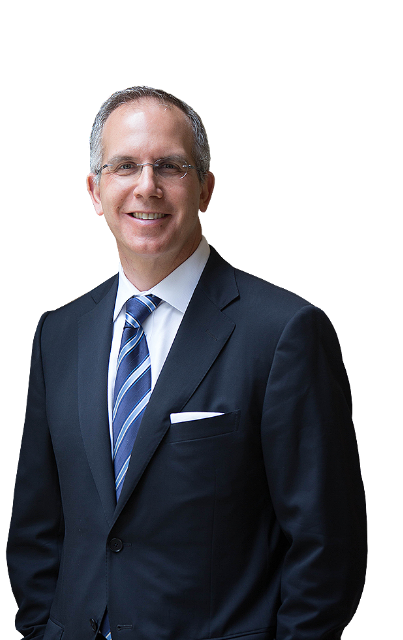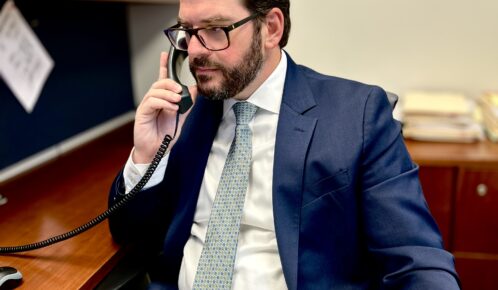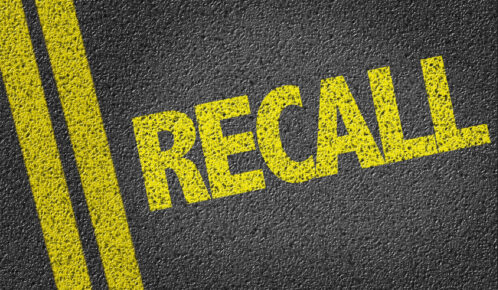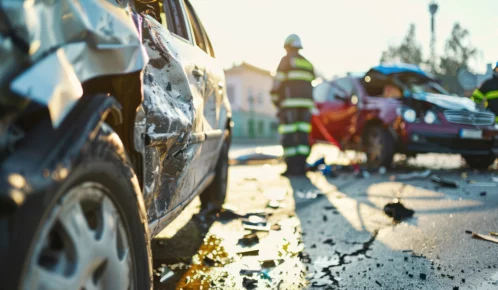Ankin Law attorney, Scott Goldstein worked with a Chicago area laborer to secure a favorable ruling in arbitration. The injured worker was employed as a laborer whose job duties included demolition, drywall, and picking up trash which he described as “physical” work. On the day of the accident he was working on a scissor lift 16 to 20 feet high. The lift was tipped by a third-party security employee and as a result, he fell to the ground. He was taken by ambulance to the hospital and was diagnosed with an L1 compression fracture in his spine, with back pain radiating to the left thigh, and numbness in all of his toes.

During the arbitration hearing Mr Goldstein was able to convince the arbitrator to award the payment of all outstanding medical services and 36 1/7 weeks of Temporary Total Disability benefits at a weekly rate of $1,305.60 less $32,080.46 which has been paid. The employer must also approve and pay for a lumbar epidural injection and any necessary post-operative care as prescribed by a doctor.
(Read the full Arbitrator Decision here)
One of the key points of contention in the hearing was whether the pain the injured worker was experiencing was caused by the fall from the lift. Below is an excerpt from the Illinois Workers’ Compensation Commission, Arbitrator Decision detailing the issue:
Issue F, whether Petitioner’s current condition of ill-being is causally related to the injury, the Arbitrator finds as follows:
To obtain compensation under the Act, a claimant must prove that some act or phase of his employment was a causative factor in his ensuing injuries. A work-related injury need not be the sole or principal causative factor, as long as it was a causative factor in the resulting condition of ill-being. Sisbro, Inc. v. Industrial Comm’n, 207 Ill. 2d 193, 205, 797 N.E.2d 665, 278 Ill. Dec. 70 (2003). “A chain of events which demonstrates a previous condition of good health, an accident, and a subsequent injury resulting in disability may be sufficient circumstantial evidence to prove a causal nexus between the accident and the employee’s injury.” International Harvester v. Industrial Com., 93 Ill. 2d 59, 63 442 N.E.2d 908 (1982).
Prior to his work accident, Petitioner worked as a laborer for Respondent performing demolition, drywall, and picking up trash. There was no evidence that Petitioner required any work restrictions prior to the work accident and Petitioner’s medical records state that Petitioner did not have any relevant medical history prior to his work accident.
It is clear that Petitioner sustained a L1 compression fracture from his work accident. The medical records from Dr. P document improvement in Petitioner’s condition with conservative treatment and Dr. P recommended on August 22, 2023 that Petitioner could return to work full duty after another 4-week course of physical therapy. When Petitioner returned to Dr. P on November 11, 2023, he reported an increase in pain that now radiated down his left leg. While Petitioner testified that he always had radiating pain since the date of accident, the Arbitrator relies on the documented complaints in the medical records over Petitioner’s testimony.
Both Dr. P and Dr. G agree that Petitioner sustained a L1 compression fracture as a result of the accident, that the fracture has now healed, that Petitioner’s radiculopathy did not appear until after working full duty in October 2023, that Petitioner’s current complaints are compatible with spinal stenosis, and that treatment for Petitioner’s spinal stenosis includes work restrictions and injections.
Based on the healed fracture, the time Petitioner returned to work full duty and the development of radiculopathy as a new symptom after Petitioner’s return to work, Dr. G opined that Petitioner’s spinal stenosis was not causally related to the fall. However, the Arbitrator notes that Dr. G based his opinion in part on the belief that Petitioner had returned to work full duty in July 2023 (See RX1, pg. 1). Petitioner was off work through August 4, 2023 (See AX1, pg. 2) at which time he was working light duty (See PX 3, pg. 132). When Petitioner saw Dr. P on August 22, 2023, he recommended that Petitioner could return to full duty work after another 4- weeks (See PX 3, pg. 135). Petitioner returned to Dr. P on November 11, 2023 after only working a few weeks of full duty work, not months as Dr. G wrote. The Arbitrator finds this difference significant in weighing Dr. G’s opinion on causation.
Turning to Dr. P’s causation opinion, Dr. P simply wrote in his narrative report that Petitioner’s “symptoms are connected to his injury.” (PX2). When asked if Petitioner’s spinal stenosis was pre-existing and, if pre-existing, exacerbated by his work accident, Dr. P responded that a preinjury MRI would be the only way to know for sure. While Dr. P’s narrative report could have been more explanatory, the Arbitrator finds his opinion credible. The Arbitrator also gives weight to the severity of Petitioner’s undisputed work accident as well as the timeline of Petitioner’s return to work and radiculopathy symptoms as discussed above. Petitioner has presented sufficient evidence showing a previous condition of good health, an accident, and a subsequent injury resulting in disability and has met his burden of proving by a preponderance of the evidence that Petitioner’s work-related injury was a causative factor in his resulting condition of ill-being.
The Arbitrator finds that Petitioner’s current condition of ill-being for the lumbar spine is causally related to the injury.



